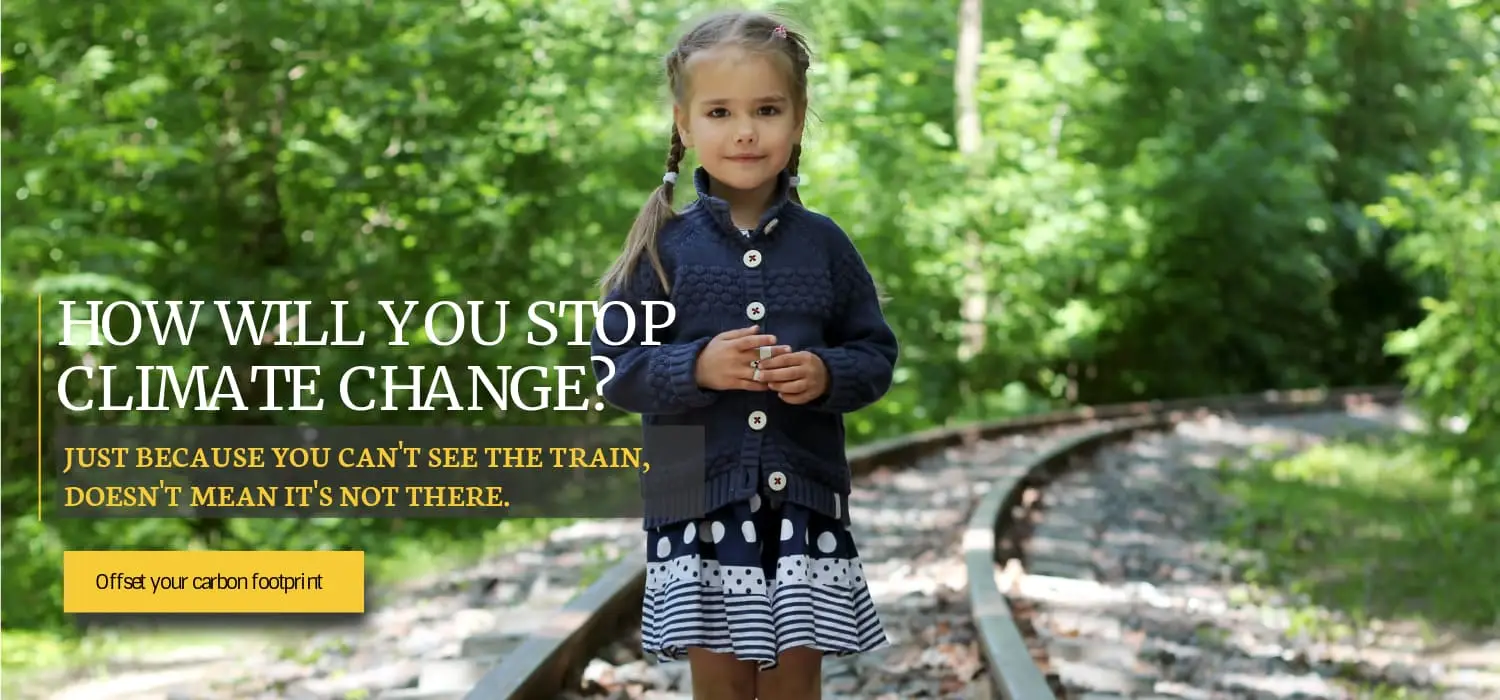September 28, 2009
By Stuart Pimm
Special Contributor to NatGeo News Watch
BETTER REDD THAN DEAD WHEN IT COMES TO CLIMATE CHANGE
Time is running out in the fight against the world’s two most critical environmental crises: global warming and mass species extinction. A significant driver of both climate change and extinctions is deforestation and its aftermath of degraded, fragmented, and isolated landscapes. Such places lose their capacity to absorb carbon emissions and to sustain species.
Swapping field clothes for a suit and tie, conservation biologist Stuart Pimm attended a United Nations event last week on forests and climate change. He was among world leaders and distinguished thinkers and activists invited to publicly express their commitment and support for the role of forests as an option to mitigate the emissions of carbon dioxide into the atmosphere. The forest event followed the Summit on Climate Change, convened at the UN a day earlier “to mobilize political will and strengthen momentum for a fair, effective, and ambitious climate deal” in Copenhagen this December.
Officials from almost every country will gather in Copenhagen to try to agree a new climate treaty as a successor to the Kyoto Protocol, the first phase of which expires in 2012. The conference, also known as COP15, is widely regarded as a critical opportunity for humanity to try to get a grip on the problem of climate change caused by greenhouse gas emissions into the atmosphere.
The meeting on Reducing Emissions from Deforestation and Forest Degradation in Developing Countries (REDD) convened by Secretary-General Ban Ki-moon at the United Nations, New York.
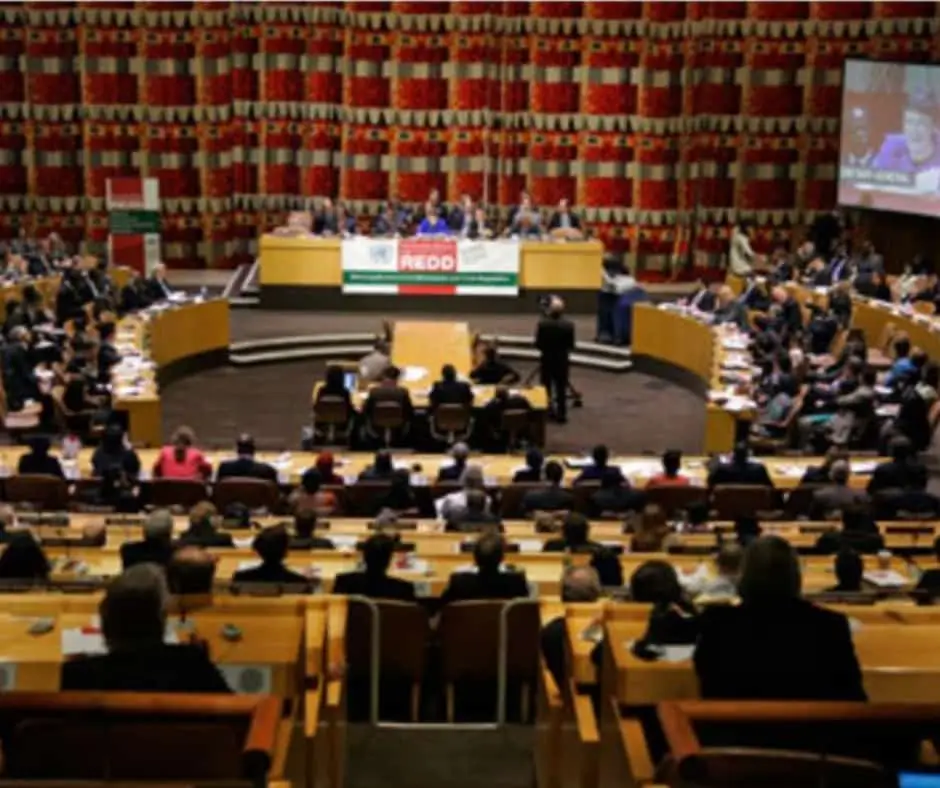
United Nations, New York, September 23, 2009, 5 a.m.
Another morning when the alarm goes off while it’s still very dark. When I dress, it’s not my boots and field khakis that I put on, but a white shirt, fumbling at this early hour with the cufflinks, and a charcoal grey suit.
The flight to New York is just over an hour. Then a taxi. It can’t get me very close to my destination. First, I see what must be every policeman in the city, then the traffic slows to a crawl, then a standstill, and I continue my journey on foot.
Different Kind of Jungle
This morning I’m off to a different kind of “jungle” and it requires different field clothes. The United Nations General Assembly is in session and I have an invitation to watch a “high level event.” What happens here may decide whether the world’s forests, their biodiversity, and their indigenous peoples, have a future.
The last few blocks have the feel of a street fair. Lots of noisy people waving posters, shouting slogans–and one, carrying a placard reading simply “Indict him!”, nearly knocks me over. I wonder who the “him” is, thinking there might be 192 national leaders to choose from, then remember that some would be “her,” so that narrows the field just a bit.
Finally, I reach the right street corner, see someone holding a small sign “REDD,” and, in short order, I am whisked through security into the relative tranquility of the UN building.
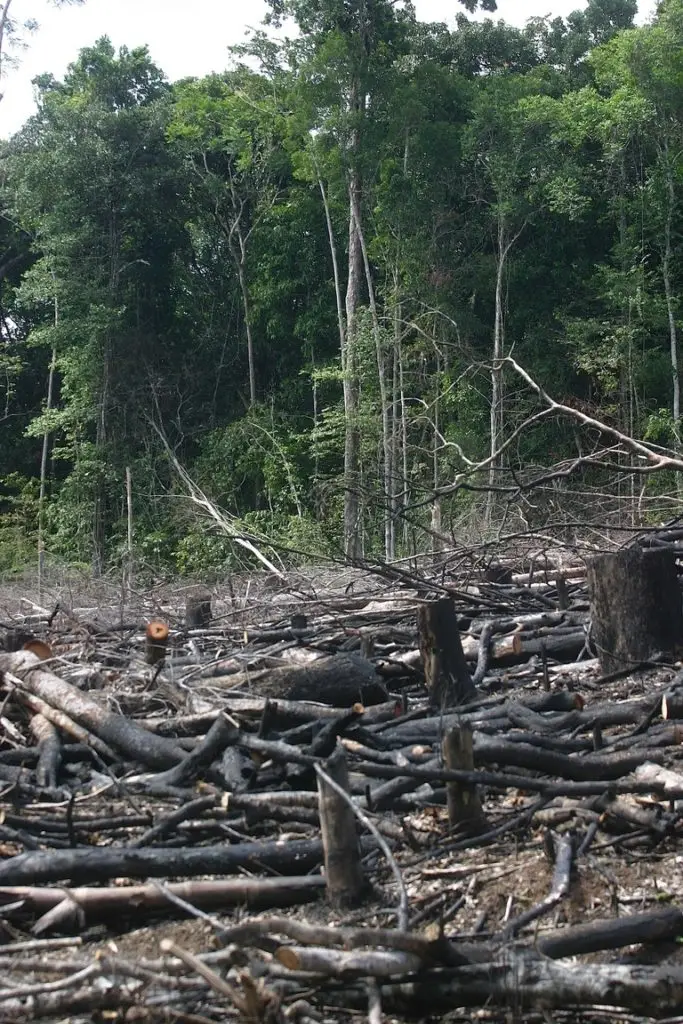
REDD: Reducing Emissions from Deforestation and Forest Degradation
REDD is for “Reducing Emissions from Deforestation and Forest Degradation.” It is a UN program that seeks to generate income for countries that provide sustainable management of forests while also contributing to important reductions in greenhouse gas emissions.
There’s a lot of science involved and the world’s forests are at stake. I worry: will this meeting of the world’s top politicians–its presidents and prime ministers–have got the message?
The United Nations Secretary-General, Ban Ki-moon, introduces the proceedings. He recognizes the commitment to the meeting–more than 85 governments are represented in the room, 18 of them by their heads of state.
Then he nails the key points:
- Deforestation causes 20 percent of the emissions of global greenhouse gases.
- Hundreds of million of mostly poor people live in forests and depend on the ecosystem services they provide.
- Forests harbor the greatest share of the planet’s biodiversity.
- Some background: A total of 183 countries have signed and ratified the Kyoto Protocol–an agreement to reduce the greenhouse gases that are disrupting the planet.
People often think that this is entirely a problem for industrial nations, such as the U.S., European countries, Japan, and so on. If so, the list of top emitters would surprise: after China and the U.S., come Brazil and Indonesia.
Brazil and Indonesia get to that position because of their high rates of deforestation.
Stopping Deforestation is a Bargain Compared to Other Solutions
Under the Kyoto Protocol, developing countries cannot receive credit for the benefits their forests provide as the major stores of global carbon. REDD aims to change that.
Brazil’s neighbor, Guyana, still has most of its forests. Its president, Bharrat Jagdeo, gave the event’s most forceful presentation. “We all profess to know how important forests are,” he started, then asked why REDD hadn’t been given the attention of other solutions. “We need to correct that this afternoon.”
Certainly, there were technical problems, he noted, but there are also technical problems with alternatives such as employing renewable energy. He felt that countries were focusing too much on REDD’s difficulties. “This is the lowest-cost [greenhouse gas] abatement solution,” he said. Indeed, studies done by the Union of Concerned Scientists show that about U.S. $25 billion in forest conservation would prevent a billion tons of carbon going into the atmosphere.
From the point of view of the developed world, Sweden’s prime minister, Fredrik Reinfeldt, spoke on behalf of the European Union. He too started with the importance of forests–home to “70 percent of the world’s biodiversity.”
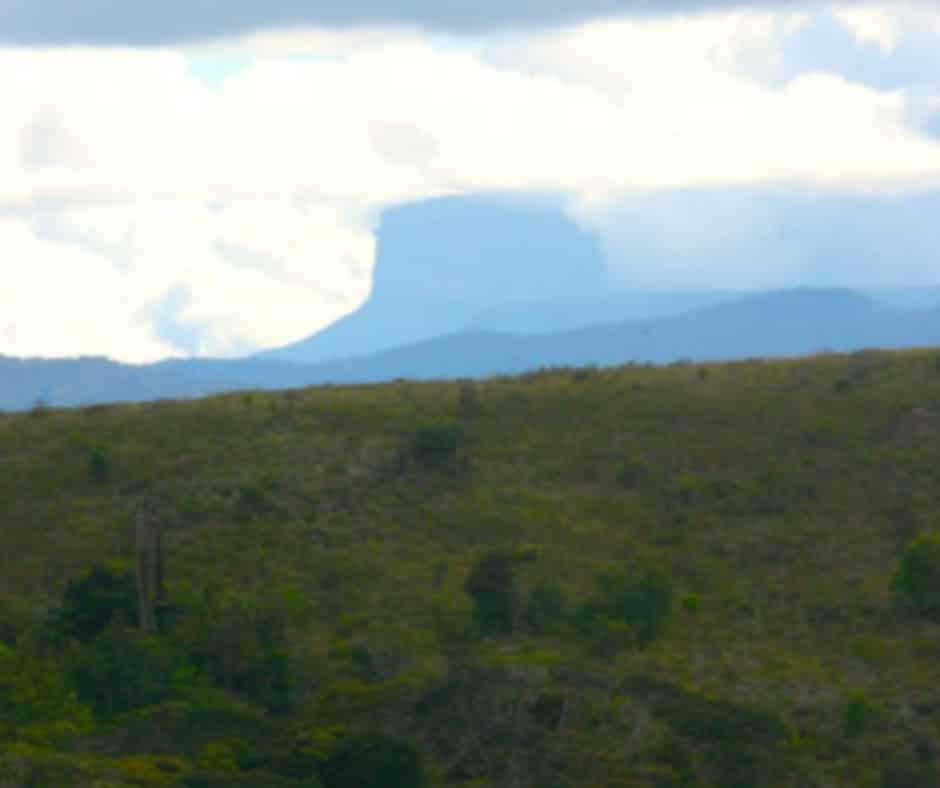
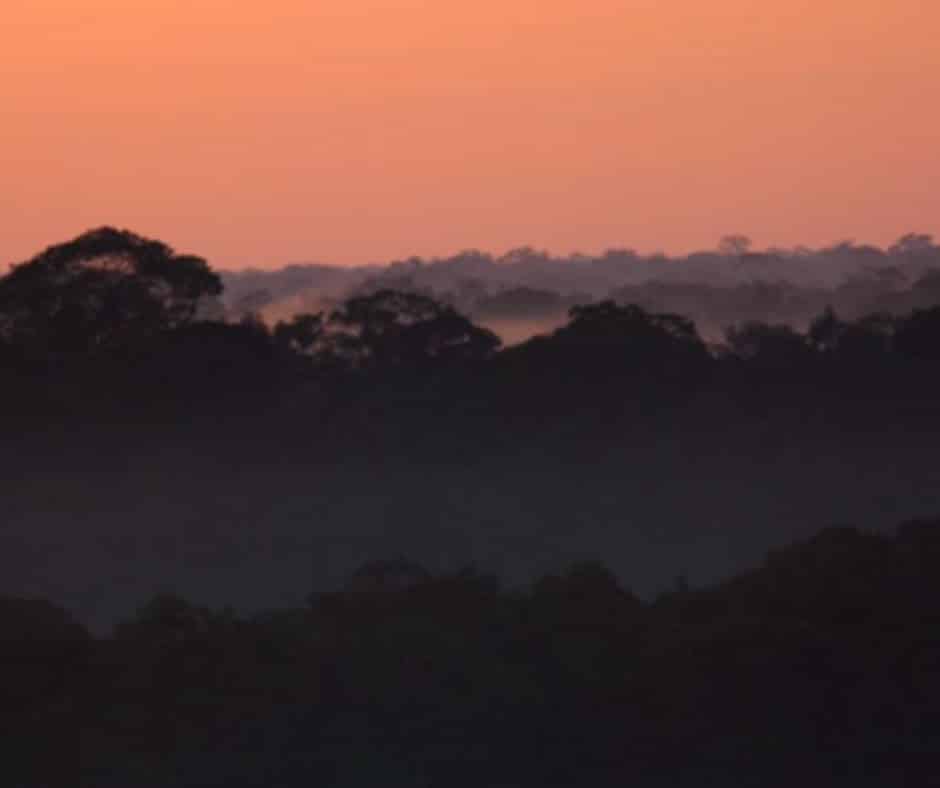
Enough to Effect Real Change?
Deforestation was running at “13 million hectares [50,000 square miles] per year between 2000 and 2005,” Reinfeldt said. Unless the world’s nations could reduce that by half by 2020, there would be no way to keep the planet from warming at least two degrees, he warned.
U.S. Secretary of State Hillary Clinton did not attend. Neither did British Prime Minister Gordon Brown. But a British official read Brown’s statement. Yes, public funding was vital, the British agreed, but so too was the private sector who could use carbon markets to offset their emissions. (Companies could compensate for their carbon emissions by investing in carbon-trapping opportunities like forests.)
With colleagues, I have spent a career documenting forest-loss and the species extinctions it causes. Would this science get onto the political agenda? I need not have worried. It has.
But would the broad international agreements on the science be enough to effect real change? The core point is will there be adequate funds to do this?”
REDD is About Human Rights
While president Jagdeo applauded Norway’s financial commitments and Brazil’s efforts to reduce deforestation, his main point was emphatic: “the core point is will there be adequate funds to do this?” Can enough money be raised through carbin markets and other global sources to make forest conservaton sustainable?
I knew from previous events, drinks and canapés would follow. From the windowless meeting chamber, we trouped into a lounge with an impressive view overlooking the river.
I wasn’t just there for the snacks, for there were short talks by two women who I have long admired, but never met.
Wangari Maathai is a Nobel Peace Prize laureate, rewarded for her work in environmental conservation, women’s rights and–so relevant to the day’s events–planting trees.
Victoria Tauli-Corpuz chairs the UN Permanent Forum on Indigenous Issues. She played a central role is getting the UN to adopt the Declaration on the Rights of Indigenous Peoples.
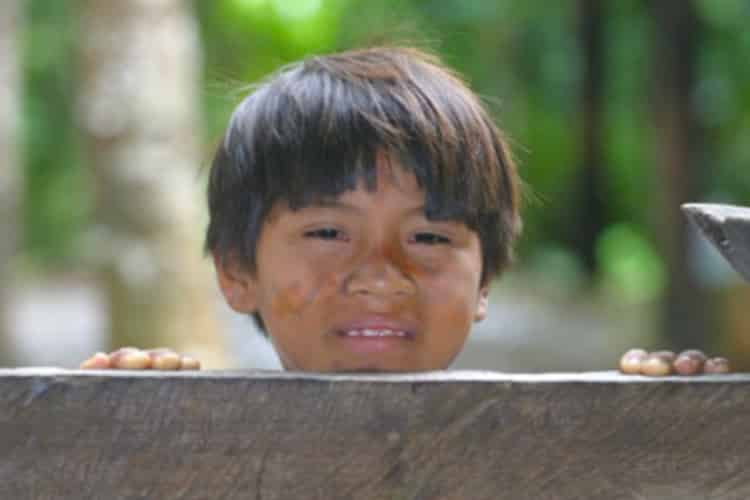
Yes, REDD is about billions of tons of carbon. And about millions of species. Maathai and Tauli-Corpuz understood that. But their unique and powerful message is that REDD is about people–whose lives and whose homes are destroyed when we clear the world’s forests.
How Can You Help?
We will continue to use both science and savvy to Connect, Protect, and Restore forest corridors. We invite you to join us in this ambitious effort!
Donating to Saving Nature puts trees in the ground for biodiversity, and sequesters carbon from the atmosphere. In short, supporting Saving Nature helps fight the two most pressing environmental problems the world faces—mass species extinction and global warming—at the same time!
Please support our forest restoration and connectivity efforts, and help fight climate change for a sustainable future!
Copyright 2025 Saving Nature | fGreen Theme powered by WordPress

